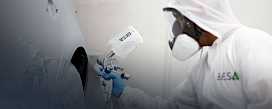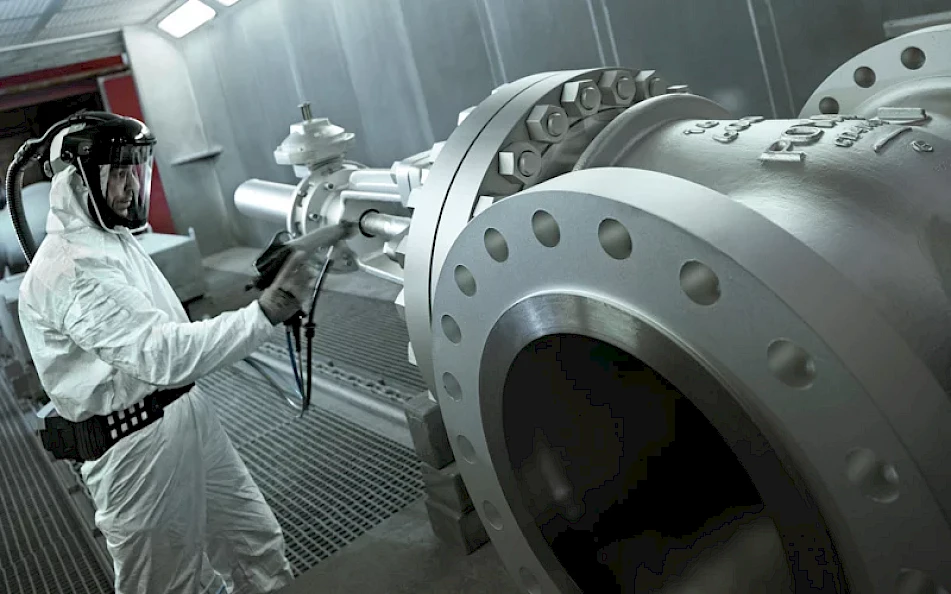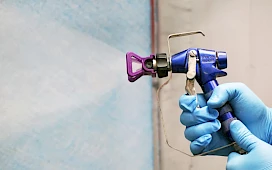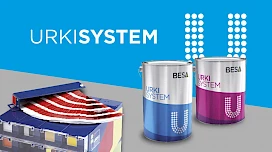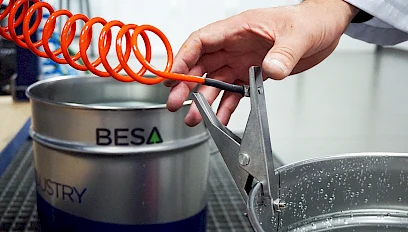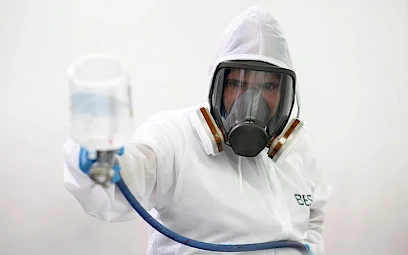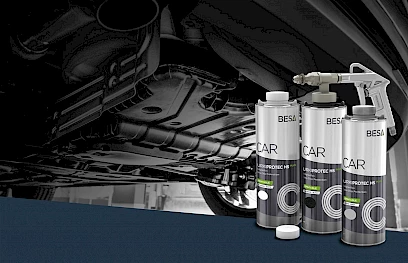What is industrial paint?
Technically, we can say that industrial paint is a product that, presented in liquid, paste or powder form, and applied by a suitable process to a surface, shall be transformed by a curing process into a solid, plastic, adhesive film that protects and/or decorates simultaneously.
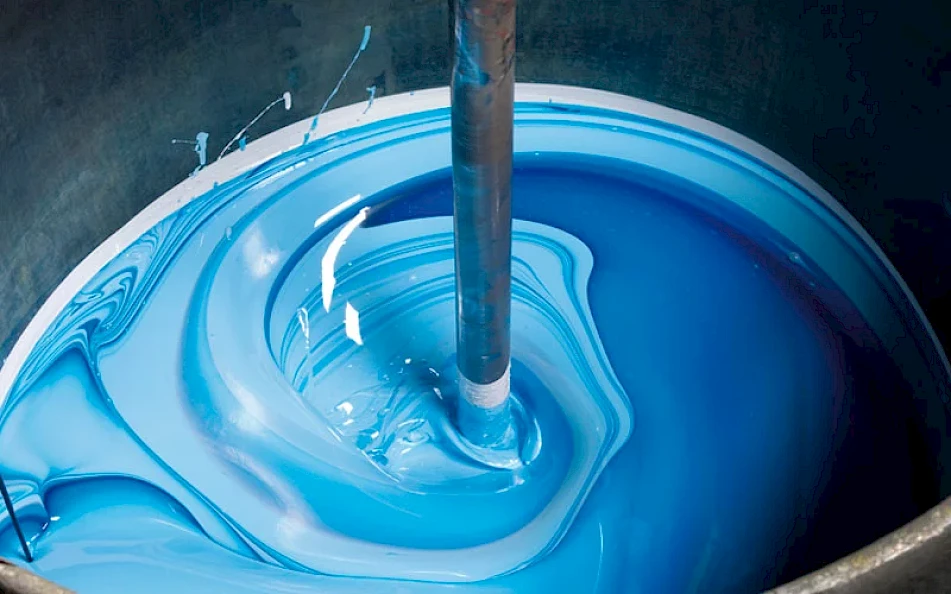
Focusing on the industrial field, we can define as industrial coating the products involved in the painting, conservation and maintenance processes of structures, machinery, consumer goods and any product associated with a certain industrial sector.
Purpose of industrial paint
Industrial paint has two main objectives:
- On the one hand, to protect the different supportsfrom the aggressions they may be subjected to, both physically (impacts) and chemically and environmentally (corrosion, weather, etc.).
- On the other hand, to give the part a better aesthetic appearancein order to obtain an optimal finish, even increasing its added value.
This last point being somewhat more subjective and difficult to assess, we will focus on the information of a painting system that guarantees an excellent performance depending on the medium it will be exposed to.
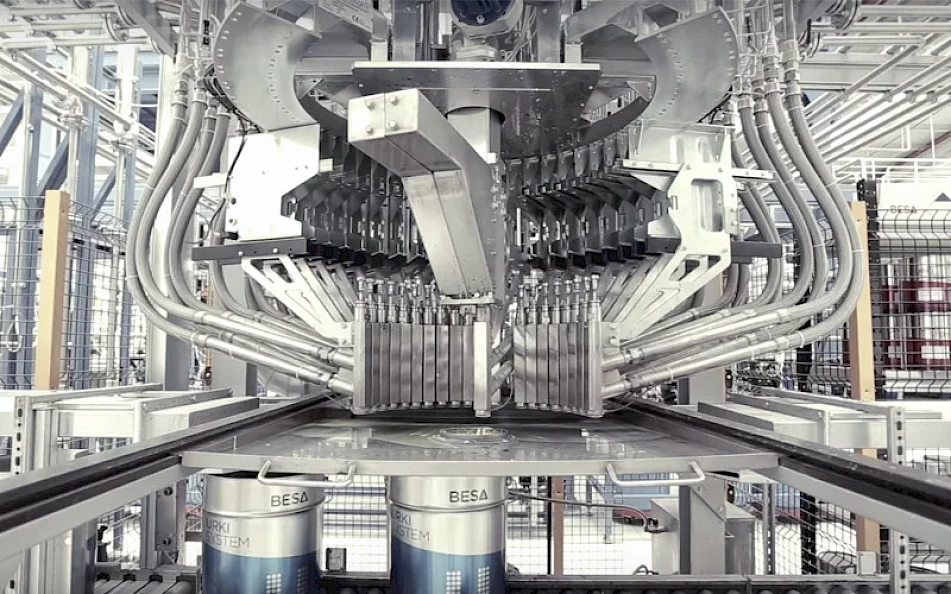
To meet these objectives, industrial paint is basically composed of the following elements:
Elements that make up industrial paint
Pigments
Its purpose consists primarily in giving colour and opacity to the paint coat. These are generally solid substances in the form of very fine particle size powder which, through a suitable milling process in the presence of the binder, are broken down into elementary particles to obtain the maximum colour performance.
The different pigments can be classified as:
- Covering pigments are the most widely used. They confer opacity to the paint through the combined effect of its refractive index in relation to the binder, granulometry and phenomena of reflection of the light that falls on the paint coat.
- Anti-corrosion pigments: used in the primers or first coats of direct contact with the steel, prevent and inhibit corrosion by anodic or cathodic passivation of the electrochemical current produced on the metal surface.
- Spreading pigments or fillers have no opacity and hardly influence the colour of paints because of their low refractive index. They are generally used in primers and base coats to achieve matte or satin films and as filler in the paint coat. Examples: calcium carbonate, talc, mica, kaolin, etc.
- Special Pigments: some of the pigments used in industrial coatings that cannot be classified in the above categories because of their specificity include:
- Metal pigments.
- Pearlescent pigments.
- Intumescent pigments.
- Toxic pigments.
Binders
It is the basic component of the paint which gives it the possibility of forming an adherent film after the paint has dried. The mechanical and chemical features of the paint depend on the binders, and therefore on their protective capacity.

Technically they are polymers with low or medium molecular weight, which through the action of oxygen in the air, heat, etc., increase their level of polymerisation until they become more or less plastic and insoluble solids. Here are some examples of binders:
- Alkyd resins.
- Acrylic resins.
- Vinyl resins.
- Epoxy resins.
- Polyester resins.
- Polyurethane resins.
- Cellulose resins.
- Chlorinated rubber resins.
- Etc.
Solvents
The mission of the solvents basically consists in allowing the paint to be applied though the chosen procedure, giving it an appropriate consistency, since a solvent-free paint, only based on pigment and binder, would generally have a very high viscosity.
Another of its missions is to enable the manufacture of the paint and maintain its stability in the container.
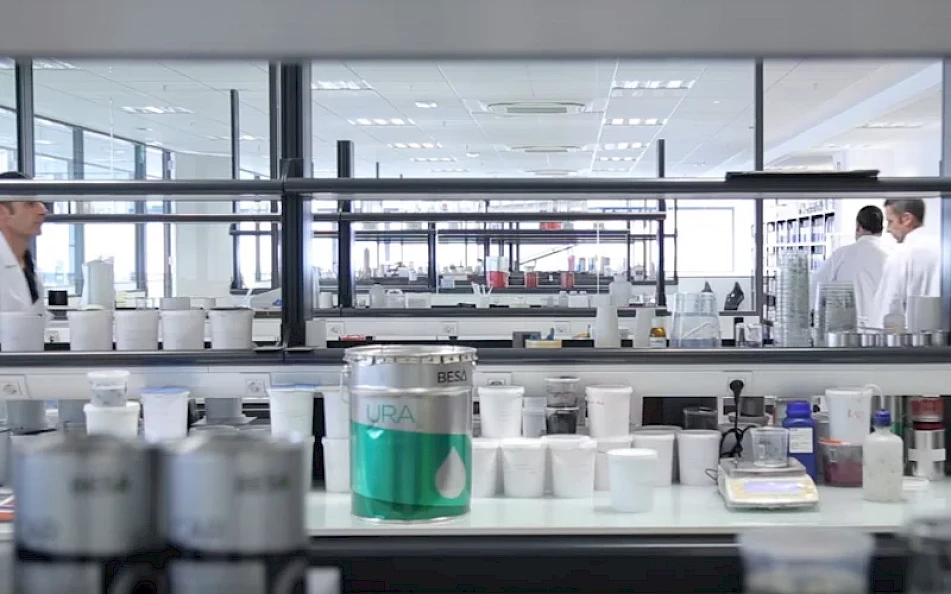
Usually several types of solvents are used in the same paint in order to regulate the dissolving power, ease of application, levelling, etc. For example: aliphatic hydrocarbons, aromatic hydrocarbons, alcohols, chlorides, ketones, etc.
Additives
They are specific action chemicals that are added in small proportions to the main components of the paint for different purposes such as improving product quality, producing special effects, accelerating hardening, conferring thixotropy, tinting, etc.
Examples of paint additives: wetting agents, thickeners, dulling agents, drying agents, fungicides, plasticisers, etc.
Characteristics of industrial paint
Any type of paint, regardless of its composition, application or function to be performed, can be defined by a series of measurable characteristics that serve to control it, both by the manufacturer and the user, and to know if the product is in good condition and complies with the specifications.
In industrial coatings, these characteristics can be divided according to the state of the paint: liquid paint or dry paint.
Features of liquid paint
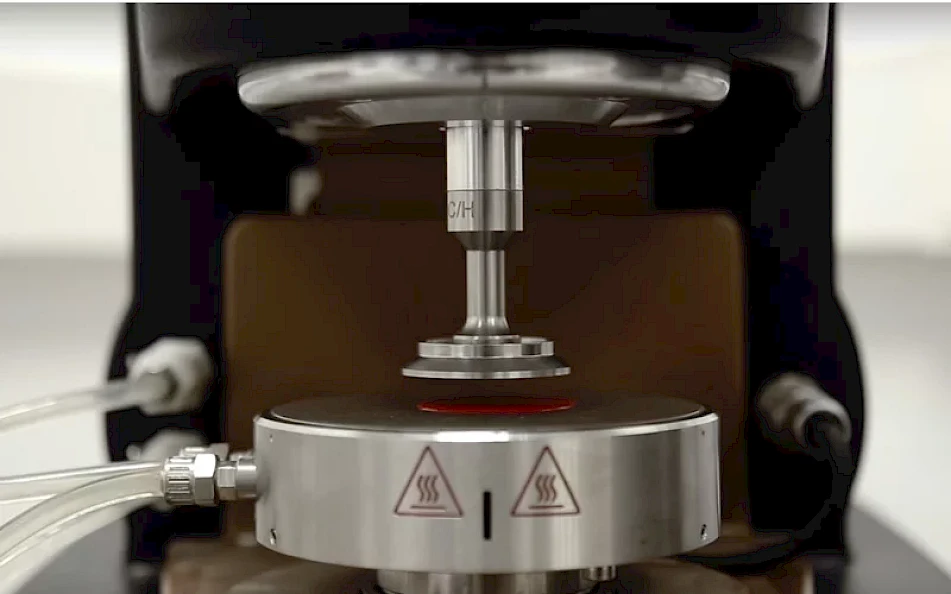
Among the main measurable characteristics of liquid paint are
- Stability: the paint must have a uniform, lump-free appearance in its packaging.
- Viscosity: is one of the most visible characteristics in paint and affects its stability and application. It indicates the consistency of the product. Ambient temperature influences the paint’s viscosity.
- Specific gravity or density: indicates the unit weight in volume. This is an important piece of information to take into account as it serves to calculate the returns. A high specific weight will result in low returns.
- Fineness of grinding:a good dispersion of the pigment and binder ensures the quality of the paint and allows to take full advantage of the colouring power of the pigments, improving the application and levelling of the paint. In gun-spray applications it is a factor to be taken into account as the paint’s fineness is conditioned by the diameter of the nozzle.
- Solids content by weight or volume: percentage of total paint pigment and binder. This aspect influences the cost and quality of the paint.
- Product life: in 2-component paints, it is important to know the time the mixture can be used after preparation. It will depend on environmental conditions, among other factors.
- Application: the paint must be in good condition to be applied after being shaken. If you add solvent, the amount must be right to achieve a good viscosity, without reducing excessively the solids content.
- Drying: during drying, different phases take place due to the evaporation of the solvents and the polymerisation reactions (touch drying, powder drying, total drying, hard drying).
Features of the dry paint film
Once the paint coat is dry, a number of characteristics of the film that has been formed can be determined and assessed.
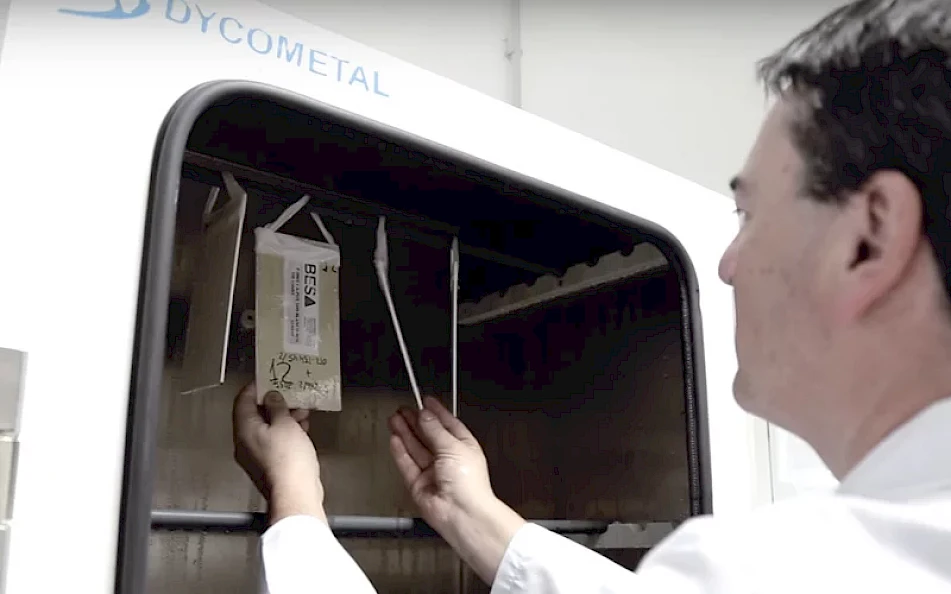
The thickness deposited will depend on the composition of the paint (solid content) and the way it is applied. Each paint must be applied with the thickness recommended by the manufacturer in the technical data sheet.
- Appearance: once the paint is dry, the film must be smooth, uniform colour and gloss, no defects in the surface paint, and good adherence between coats or to the support.
- Scratchability:the greater or lesser resistance to scratching is related to the hardness of the paint. The use of small percentages of special additives can significantly increase this feature.
- Salt fog resistance (marine environments):this is an accelerated test (measured by hours) to try to predict the possible behaviour of the paint in what regards corrosion in maximum humidity conditions.
- Gloss:the surface can be glossy, semi-glossy, satin or matte. In paint the level of gloss is determined by the pigment/binder ratio, the dispersion levels, the thickness of the coat or the method used for its application and drying.
- Adherence: this is one of the main requirements of the paint, since the protection that is expected to be achieved depends on this. The capacity of a paint to resist detachment from the support where it has been applied is verified by performing different tests.
- Weather resistance: it is an essential characteristic of the paint. This check is usually carried out in artificial climate, where you can programme different cycles of temperature, humidity, condensation, ultraviolet radiation, etc.
- Covering power: this measures the paint’s capacity to cover by opacity the surface on which it has been applied. It is determined directly by the thickness of the coat deposited.
- Flexibility: the following methods are available to test the flexibility of a dry paint film. Among the best known are mandrel stamping and bending.
- Yellowing: this phenomenon usually occurs in white or light-coloured paints formulated with resins containing unsaturated oils such as alkyd. It is produced mainly by rusting reactions during drying or by degradation that produces a continuous exposure of the surface to ultraviolet radiation.
- Colour: the colour of an object depends on the type of light under which it is observed. In order to have accurate colour information, you can use different tools, such as a spectrophotometer.
- Resistance to impacts, scratches and abrasions: a series of tests are carried out to check the resistance and hardness of a paint against different mechanical impacts.
- Hardness: there are devices and tests to check the hardness of the paint, in order to measure the paint coat’s resistance to penetration.
- Resistance to extreme temperatures:surfaces exposed to extreme temperatures require a careful choice of the paint to be used, as unsuitable pigments and binders can lead to loss of adherence, cracking, colour changes or destruction of the film.
Types of industrial paint
It is difficult to classify the different types of industrial paints and coatings in a defining way, since there can be different interpretations based on factors such as their composition, their position in the finish system or even according to the way the paint dries and hardens after application.
Depending on the position in the finishing system
For an industrial paint to fulfil its protective and decorative functions, it is essential to know the particularities of each painting system and process. We can classify the industrial paint according to its position in the application coat:
► Primer
These are the first coats of paint in direct contact with the substrate, highly pigmented and with a low binder content.
Its mission is to serve as an anchor for the following coats of paint and to prevent rusting on metal surfaces by means of the anti-corrosion pigments it contains. Types of primers for industrial paint.
► Intermediate coats of paint
These coats are applied over the primer, generally with the mission of increasing the thickness of the paint system, in order to avoid giving several coats of finish, reducing costs in the application.
The pigment/binder ratio is lower than that of primers but higher than that of finishing paints.
Nowadays, high thickness intercoats are widely used to achieve films of 100 or 200 microns per coat.
► Finishing paints
As the name suggests, they are those that are applied as last coat of the painting system, either to the primer or to the intermediate coat.
They are formulated with a low pigment/binder ratio to achieve the best permeability and strength features. They are usually gloss paints, although there is an increasingly growing demand for satin and matt finishes in the market.
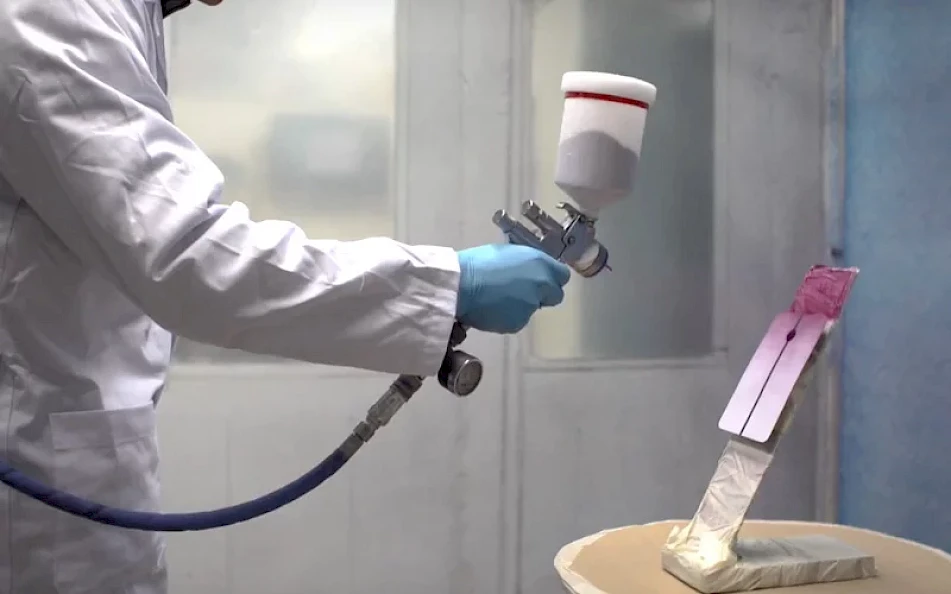
► Varnishes
These are coatings composed of binder and solvents. Industrial paint varnishes have two main objectives: on the one hand, to embellish the painted part and on the other, to give it added protection against external agents or mechanical impacts.
There are several types: synthetic varnish, acrylic varnish, polyurethane varnish, gloss effect, matte effect, etc.
Depending on its composition
We can also classify industrial paint according to its composition:
► Nitrocellulose paint
Nitrocellulose is one of the oldest resins used in the manufacture of paints and varnishes. This type of paint represented a milestone in the development of industrial paint, after obtaining easy to apply, fast drying and high-performance finishes.
Nitrocellulose paints have a series of characteristics of their own, which allow them to obtain additional advantages in many applications, among which we can highlight:
- High solubility in organic solvents.
- Compatibility with different resins and plasticisers.
- Transparent and colourless films.
- Odourless and non-toxic.
- Fast solvent removal on application and low residual solvent retention.
- Fast drying.
- Available in various viscosities.
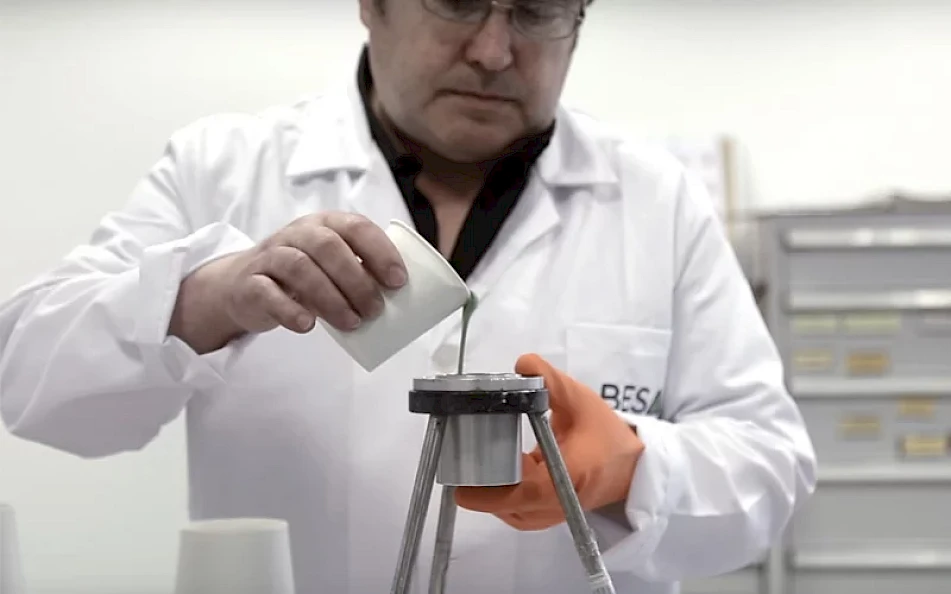
Nitrocellulose are very sensitive to moisture, which is why drying time is very important, and the use of suitable solvents, generally of slow evaporation, is convenient.
► Synthetic paint or alkyd paint
The development of applied chemical synthesis for industrial purposes also began parallel to industrial development.
The numerous investigations carried out to improve the performance of oil-based paints includes a synthetic product, obtained by the reaction of a polybasic acid such as phthalic acid with a polyalcohol such as glycerine, resulting in a polyester.
This polyester could not be used pure because it is extremely hard. By modifying its molecule with an oil, a product with specific characteristics was generated and classified as alkyd resin.
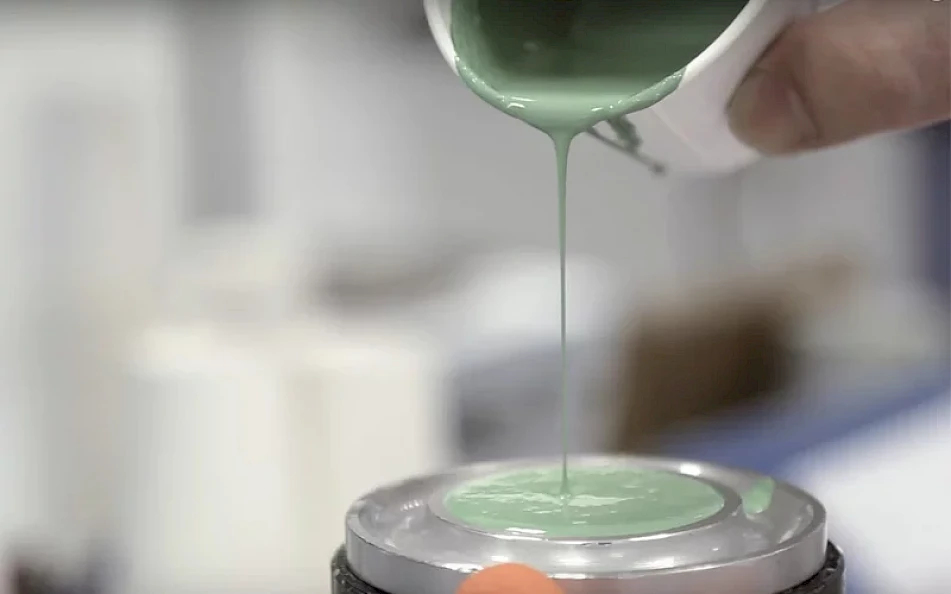
The ratio of glycerol-phthalic polyester to acid and/or the type of oil selected gave it its own characteristics in terms of drying, hardness, elasticity, solubility, etc.; making it possible to formulate specific alkyd resins for a given paint use.
It is a type of industrial paint that uses the oxygen to complete the chemical reaction and thus offer long-lasting finishes.
These coatings take longer to dry than other types of paint because for a correct application the oxygen must be dispersed throughout the paint film.
► Epoxy paint
Epoxy paint is one of the most widely used industrial coatings and offer a balanced performance for different types of industrial paint projects, thanks to its excellent protection features against corrosion, impact or abrasion.
It also offers very fast drying times, favouring productivity, in addition to great adherence to different materials and surfaces (iron, zinc, aluminium, etc.).
► Polyurethane paint
Polyurethane coatings are generally presented as 2-component paints (the base can be a “polyol” and the catalyst a polyisocyanate).
Once mixed, these components react to form a polymer that results in a film that combines different aesthetic, physical and chemical characteristics from other air-drying coatings. They tend to have a high solid content, which makes it possible to create a thick, durable film.
Among the main characteristics of this type of painting are high resistance to corrosion, abrasion and extreme temperatures thanks to, among other things, the special additives it contains. It also offers high versatility in different industrial applications.
We differentiate between two types of polyurethane paint:
- Acrylic paint: is a type of water-based industrial coating, which is gradually becoming more prominent in industrial applications, but still at a long distance from epoxy or alkyd paints. It contains low-pigment dispersants to improve its anti-corrosive capacity.
- Polyester paint offers excellent resistance to weathering under the most diverse atmospheric conditions, such as: marine areas, areas with high solar radiation, high humidity industrial areas or areas where the deposition of residues in suspension on the painted surface is aggressive to the coating. They can be applied, for example, in sectors such as aviation or the naval sector.
Depending on the drying process
Finally, we can classify industrial paints by differentiating them by the way they dry and harden after application.
► Evaporation drying paints
In these paints, the binder does not undergo any variation during the drying process. These are hard resins that have previously been dissolved in appropriate solvents and after evaporation return to their original state.
These resins have medium-high levels of polymerisation, in order to achieve good resistance, which is why they are usually of high viscosity and therefore have a low solids content if not modified by others.
This group includes those with the following base:
- Nitrocellulose resins.
- Vinyl resins.
- Chlorinated and cyclised rubber resins.
- Thermoplastic acrylic resins
- Tar and asphalt.
- Etc.
► Oxidative drying paints
In oxidative-drying industrial paints, binders are characterised by their fatty acid structure.
Drying takes place through oxygen uptake of the air after the solvents have evaporated. The resins are transformed during the drying reaction into compounds of higher molecular weight with different features from the initial ones, losing solubility in their solvents.
This group includes paints with the following base:
- Vegetable oils (linseed, wood, dehydrated castor oil, etc.).
- Alkyd resins modified with drying oils.
- Phenolic varnishes modified with oils (wood, linseed).
► Oven-drying paints
In industrial oven-drying coatings, the polymerisation of the binder takes place through external heat provided in convection ovens, infra-red, etc.
The drying temperature is controlled with special devices in different parts of the oven, which will influence the homogeneity of the finish and the colour of the coating.
A combination of ideal temperature and correct drying time will guarantee an optimum curing of the surface, while ensuring a suitable result in the mechanical, chemical and appearance features of the paint.
Types of oven-drying paints:
- Alkyd resins combined with amines.
- Thermosetting acrylic resins.
- Epoxy resins combined with phenolic or amine resins.
- Silicone resins.
► Reactive drying paints
The reaction must take place with a second component called catalyst or hardener, added prior to application.
Although these paints need more time for total hardening, their features are similar or even superior to those of drying by temperature, thanks to the high cross-linking levels obtained in the reaction of the two components.
The most commonly used reactive or 2-component paints are:
- Epoxy resins catalysed with amides or polyamides.
- Isocyanate-catalysed polyester resins.
- Peroxide catalysed polyester resins.
- Acid-catalysed alkyd resins
- Tars and epoxy resin or polyurethane.









